If you’re partial to a bit of tinkering with your vehicle, a garage or large shed is essential so that you can keep your tools safe, and so that you have a sheltered place where you can take things to bits without worrying about the elements.
Whether you’re looking for a house with an existing garage, you’re looking to convert an existing space into a garage, or you’ve got some space on your property you can put a garage on, the following advice applies.
Planning
When constructing a new garage, you’ll need to consider your local building laws. These will define important structural and positional limitations for your garage, such as:
- Height in relation to boundary (HIRB)
- Total permissible impermeable area (i.e. areas covered in buildings or concrete that won’t soak up water
- Minimum finished floor level (FFL) in relation to any flood risk (check for overland flow paths)
- Front yard setback (i.e. how close you can build the garage to the street)
- Historic, viewshaft or character overlays on the LIM (land information memorandum).
In the image below, the overland flow path has been noted, along with the FFL of the garage and the setback from the path. The FFL of the garage has to be above the minimum 100-year potential flood level given that the flow path cuts across the property The garage on the right (on the neighbouring property) was built before the unitary plan was enacted, so doesn’t comply with the current planning laws.
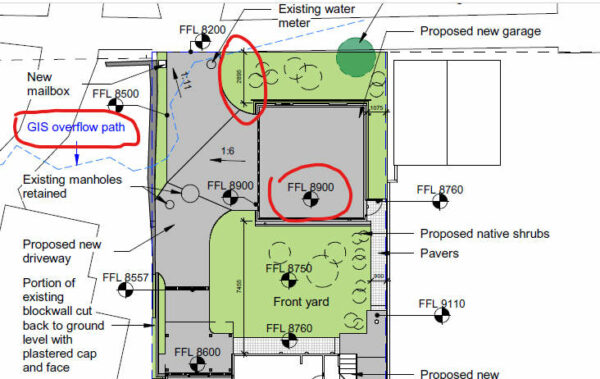
It’s important you talk to an architect so that you can submit your plans to council and have them accepted the first time.
Dimensions
How many vehicles do you want to fit in your garage? Do you need to store things like bikes or canoes? What type of work do you want to do on your vehicle?
Will you be pulling the engine out of the vehicle (in which case you’ll need room for an engine hoist).
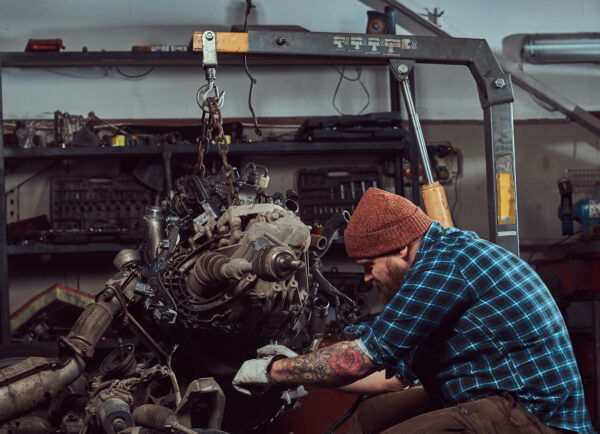
Will you be raising the vehicle on jacks so that you can work underneath it (in which case you’ll need a creeper that you can lie on and roll under the vehicle).
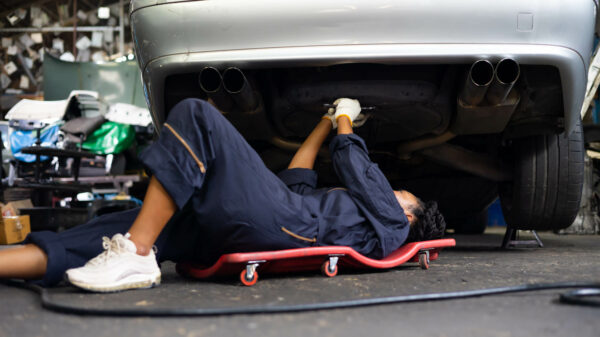
Do you want a fixed workbench or one that is on casters for better flexibility? And if you do want a workbench, how big should it be?
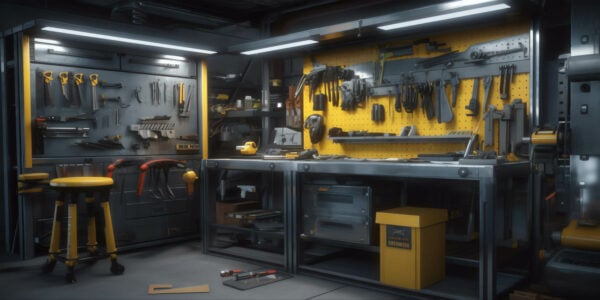
Do you want your tools in a fixed place, e.g. above a workbench, or in a rolling toolbox on casters?
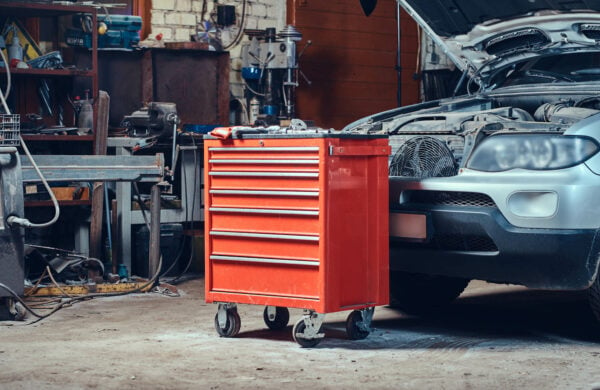
Do you need extra height because you have a tall vehicle like a motorhome or truck, or you want to install a mezzanine floor for storage?
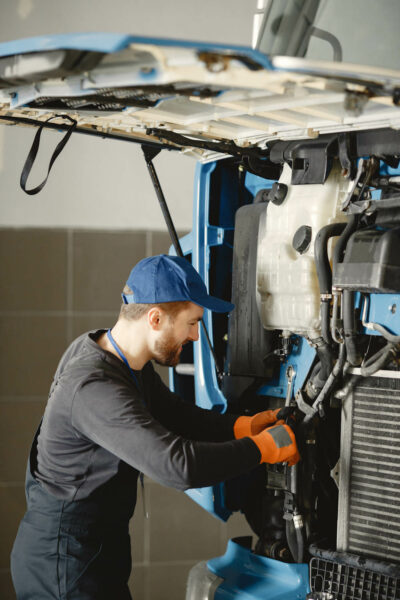
In terms of the overall size of the garage, we already spoke about planning laws and not exceeding the maximum impermeable area on your section. A reasonable-sized double garage would be 6.5m squared. This means that, allowing for 4.5m for your vehicle, you have another 2 metres to play with.
Most vehicles are under two metres wide, so 6.5m gives you plenty of room to get around the vehicles. If you want to work on one of the vehicles you can remove the other one to give you plenty of space.
Of course, you can go bigger – much bigger! Once you get to 8 metres long, you start having much more flexibility. However, many sections in the city simply won’t accommodate a 50-square-metre garage.
Storage
Shelving and tool storage are important considerations, plus you’ll want to find spaces for the other things that might live in your garage, such as your lawnmower, gardening implements such as a wheelbarrow, and perhaps a secondary freezer to enable you to bulk-buy and store meat when it’s on special.
When planning a garage construction, ensure that the builder puts enough nogs in the wall so that you can fit shelves or cupboards that are sturdy.
Electricity and water
You’ll need power points where you plug in non-battery-powered tools. You might want to pre-wire for an electric car charger, even if you don’t have one yet.
Engaging a person who knows how to plan lighting is important because you will regret not installing enough lights the first time you have to work in a dim, gloomy environment trying to see things in an engine bay.
As you can see in the plan below, this garage has a plan for an EV charger, power points and LED downlights.
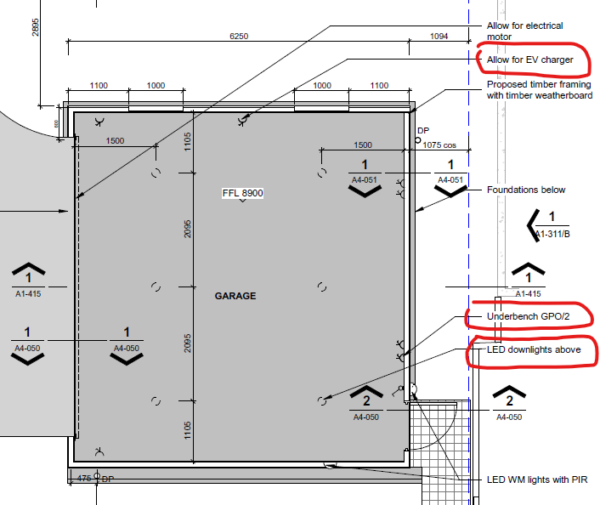
You might also consider if you want a sink and a hose connection. The sink could be inside or outside.
Design and aesthetic
There are choices galore for how your garage can look. Will you make it fit in with the character of the house or the street, or will you do something bold and modern? Do you want your garage door to be ‘hidden’, i.e. blend in with the cladding? How many windows do you want? What kind of other access do you need, e.g. a second door at the side or rear?
Consider security, especially if you have easy-to-steal vehicles like motorbikes. You’ll need a strong lock on the access door, and perhaps you might want to connect your house alarm to your garage, plus put security lights and a camera around the perimeter.
An architect can help you with your requirements but also make use of the internet to see what other people have done.
Of course, we’ve only assumed that you have the kind of car hobby where you like taking things to bits and getting a bit greasy. If you’re more inclined to have collector cars and simply want a space to hang out with friends and admire them, your requirements are going to be far different.

